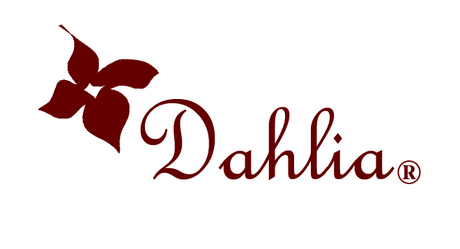Why New Yorkers Need to Have BFE>=95% Masks
Dahlia believes that wearing face masks in public places, especially in enclosed spaces such as the subway and on buses, is a CRITICAL measure to prevent COVID-19 before a vaccine or effective medicine are available. We believe that it is especially important for New Yorkers to wear quality face masks that have a BFE >=95%.
- Masks have proven effective in preventing and containing Covid-19 since January in east Asian countries such as China, South Korea, and Japan. Dahlia started promoting mask-wearing since March 1st, 2020, when the first confirmed COVID-19 case in NYC was confirmed. We also hosted an online seminar with thousands of attendees on March 8th. Experts from Zhejiang University Medical School First Affiliated Hospital, one of the best hospitals in China and the author of the first "Handbook of COVID-19 Prevention and Treatment" were invited as guests.
- On April 15, 2020, New York Governor Cuomo finally ordered all people to wear masks or face coverings in public.
-
As we stated on our March 18th petition, there are enough affordable masks with BFE >=95% for Americans without diminishing medical supply. It is irresponsible to ask people to wear just any face covering.
A homemade mask is much less effective than a mask with BFE >=95%. This was stated on 03/30/2020 in WIRED’s "It's Time to Face Facts, America: Masks Work": “A 2008 paper found that masks made from kitchen towels were about half as protective as surgical masks… The T-shirt masks were comfortable, though, and one-third as effective as the surgical masks… A 2010 study reached a nearly identical conclusion.” - “China’s Official Covid-19 Mask Wearing Guidance” instructs people to wear at least a “China's disposable medical mask” which requires BFE >=95%, the same BFE standard as American's medical mask ASTM 2100 Level 1.
Related News
4/22/2020 Universal Masking is Urgent in the COVID-19 Pandemic: SEIR and Agent Based Models, Empirical Validation, Policy Recommendations
(1) significant impact under (near) universal masking when at least 80% of a population is wearing masks, versus minimal impact when only 50% or less of the population is wearing masks, and (2) significant impact when universal masking is adopted early, by Day 50 of a regional outbreak, versus minimal impact when universal masking is adopted late. These effects hold even at the lower filtering rates of homemade masks.
https://arxiv.org/abs/2004.13553
4/15/2020 New York Gov. Cuomo to order all people to wear masks or face coverings in public
New York Gov. Andrew Cuomo plans to issue an executive order requiring all people to wear a mask or face covering while in public as the state works to combat the worst coronavirus outbreak in the U.S.
“If you are going to be in a situation, in public, where you come into contact with other people in a situation that is not socially distanced you must have a mask or a cloth covering nose and mouth,” Cuomo said during a press conference in Albany.
4/01/2020 CNN Headline: Asia may have been right about coronavirus and face masks, and the rest of the world is coming around
03/30/2020 Wired: It's Time to Face Facts, America: Masks Work
A 2008 paper found that masks made from kitchen towels were about half as protective as surgical masks. For a study published in 2013, scientists compared the filtration efficiency of surgical masks to linen, silk, a scarf, a kitchen towel, a pillowcase, a vacuum cleaner bag, and masks that volunteers made from 100 percent-cotton T-shirts. The surgical mask performed best, followed by the vacuum cleaner bag and kitchen towel, but the latter were too thick and stiff to be worn for long periods of time. The T-shirt masks were comfortable, though, and one-third as effective as the surgical masks. “Our findings suggest that a homemade mask should only be considered as a last resort,” the authors wrote, “but it would be better than no protection.” A 2010 study reached a nearly identical conclusion.
3/12/2020 Time:
Wearing a mask is against CDC’s current advice that only those who are sick, or their caregivers, should wear masks due to the lack of evidence supporting the effectiveness of masks against this novel virus. “But that should not be the reason to dismiss its use, because there may never be definitive scientific proof. A properly controlled study would be impossible to conduct ethically,” David Hui, a respiratory medicine expert at the Chinese University of Hong Kong who studied the 2002 to 2003 outbreak of severe acute respiratory syndrome (SARS) extensively, explains. “You can’t randomize people to not wear a mask, and some to wear a mask, and then expose them all to the virus."
3/9/2020 New York Post:
An article released by the New York Post on March 9th shows the case of one person with COVID-19 infecting 13 people on a bus and yet none of the passengers on the bus who were wearing masks became infected.
2/13/2020 New York Times:
Historically, anti-epidemic masks were invented in China in 1910 and helped contain the pneumonic plague. Countries in the East such as China, Korea, Japan etc., believe in the use of masks and the actual COVID-19 combat experiences in China have supported wearing masks as an effective way to prevent spread because masks provide a barrier from respiratory droplets, which is predominantly how the virus spreads.
